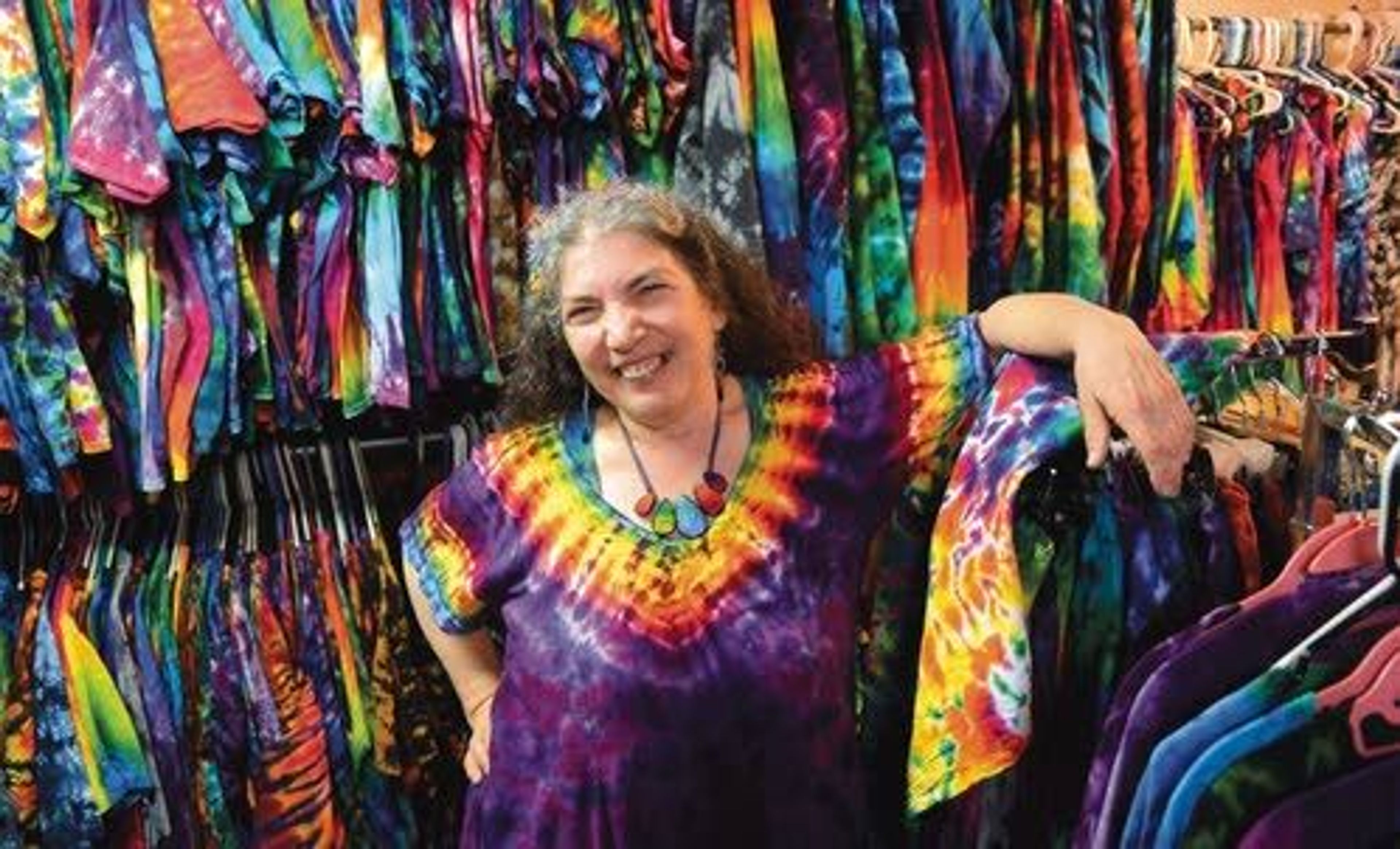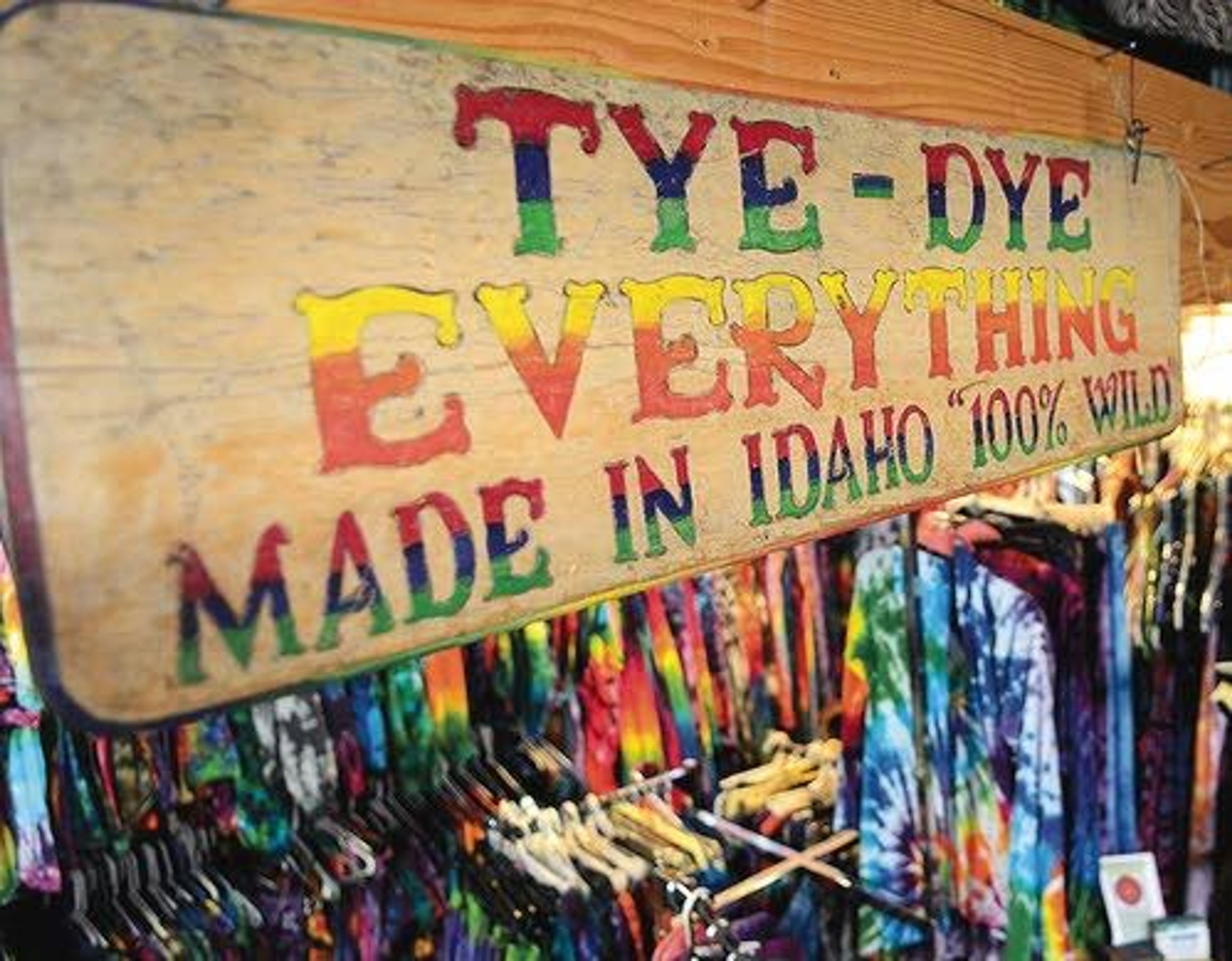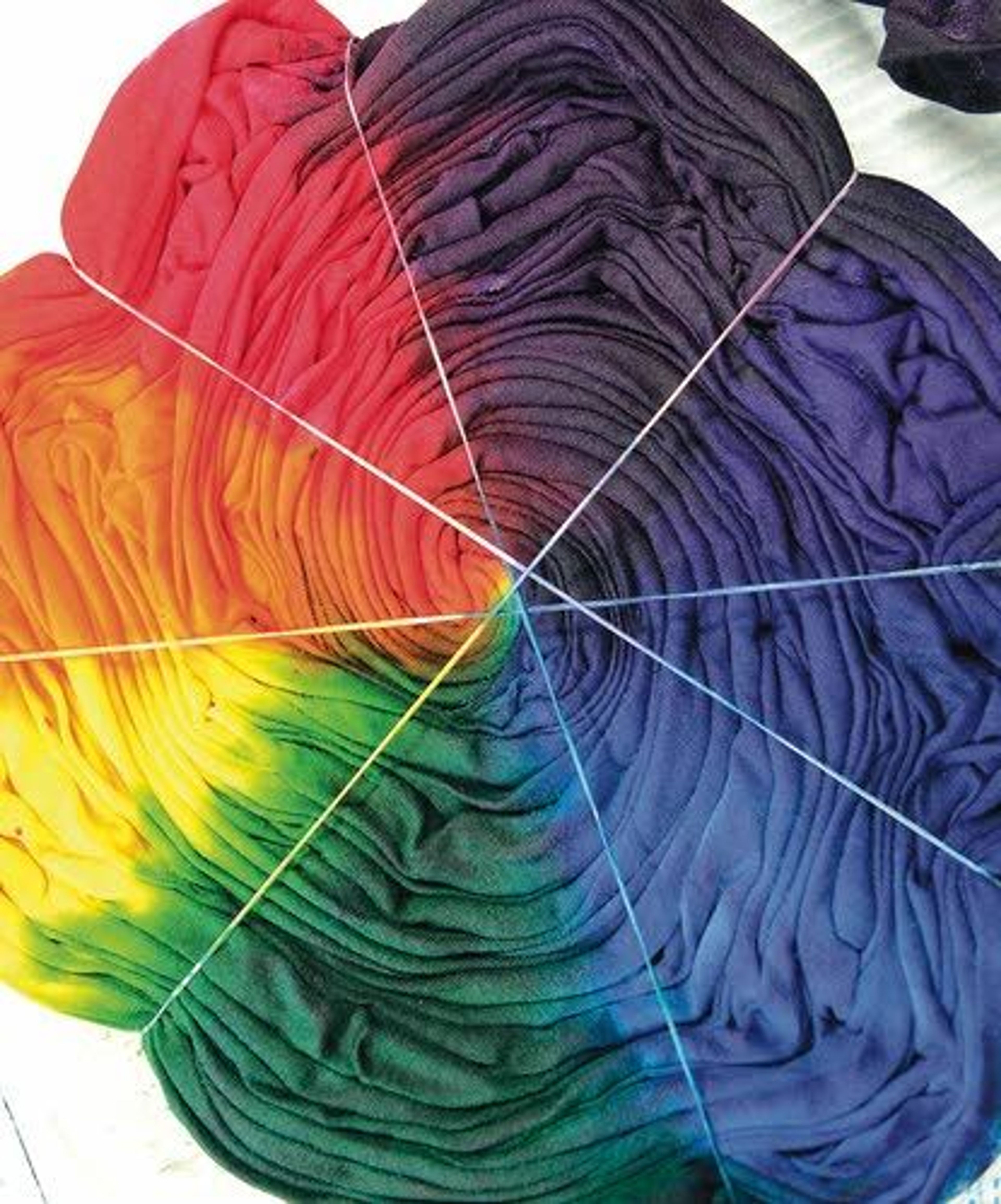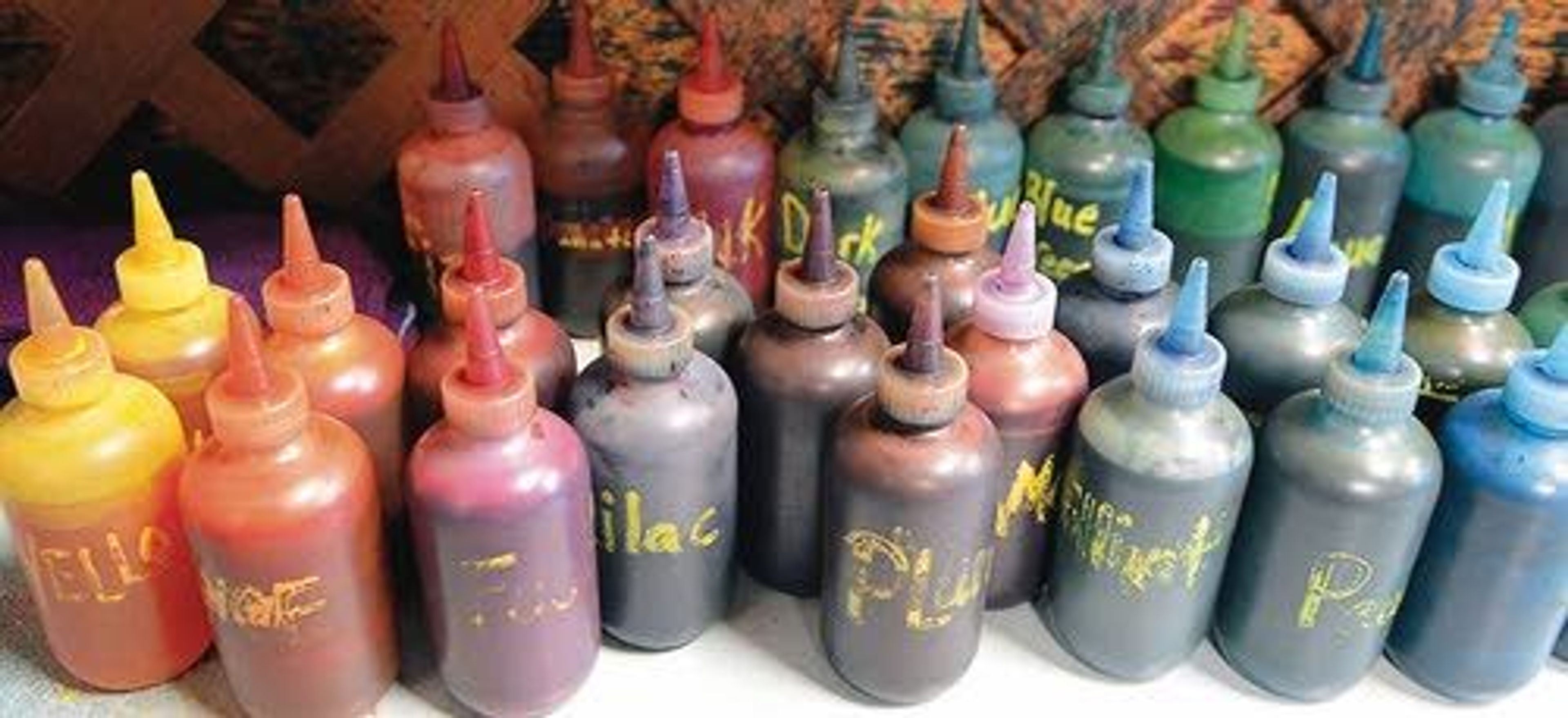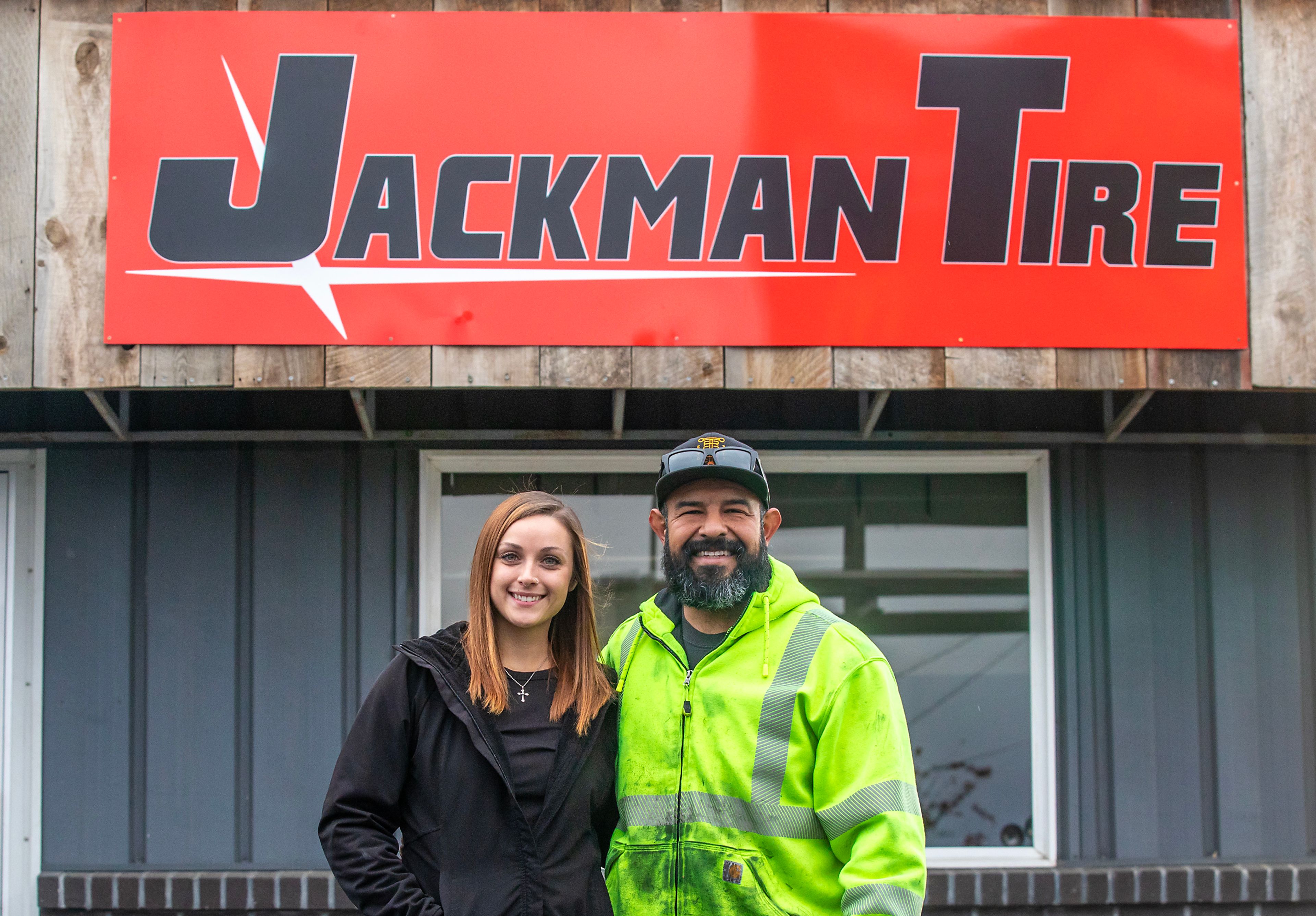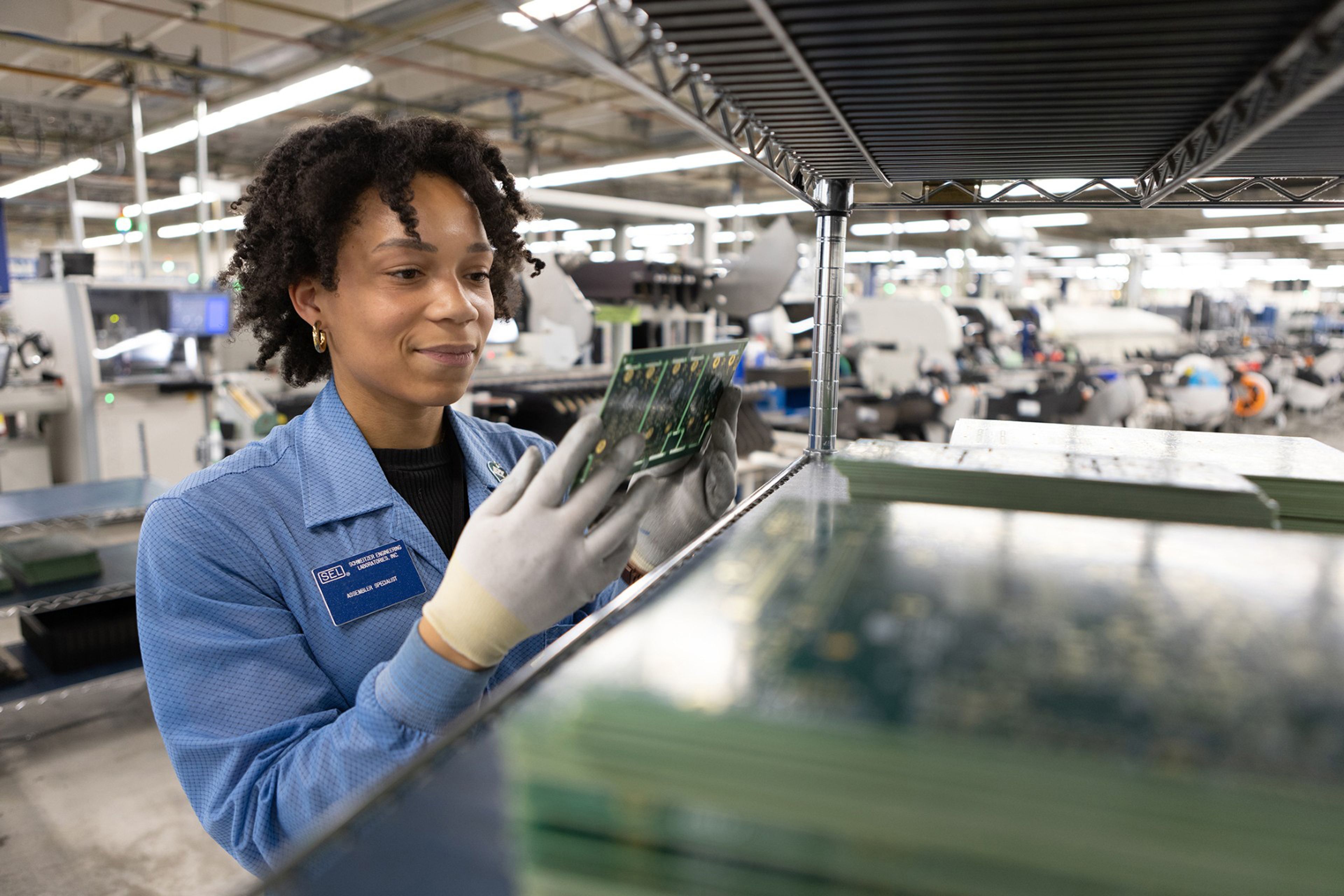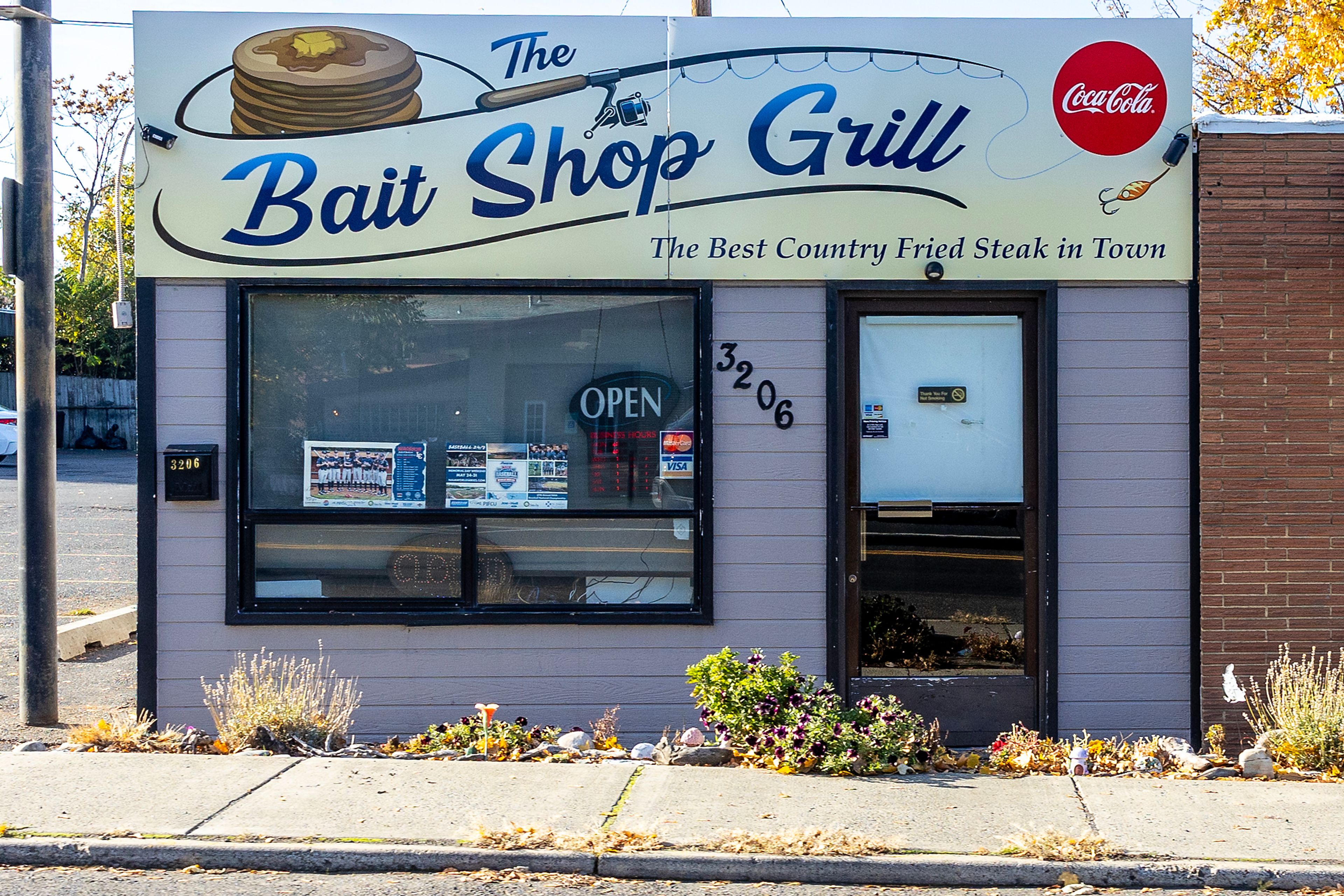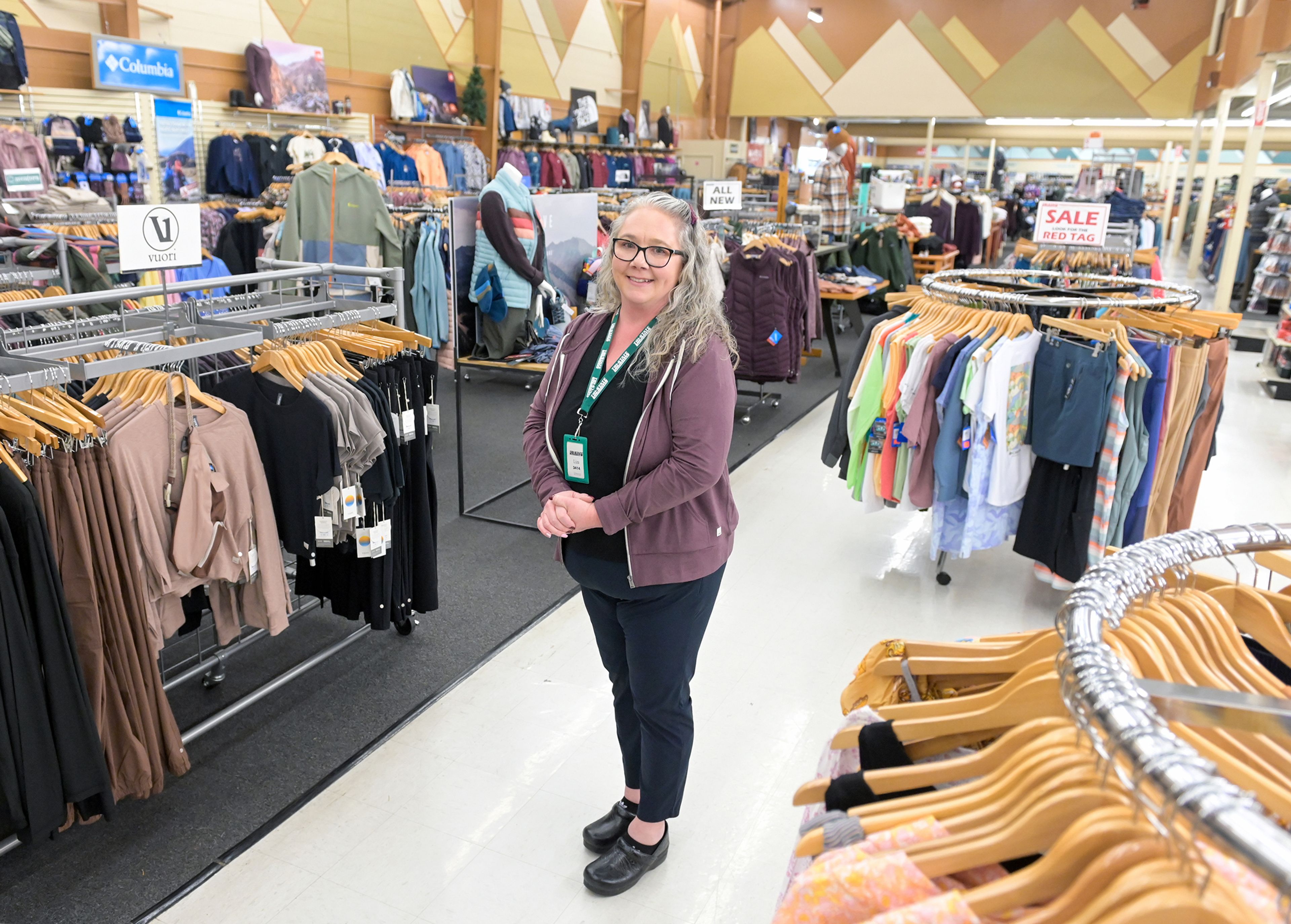MOSCOW - Flashy socks peeping out from the cuffs of dress pants and leather shoes could be the next big trend in men's clothing.
Seemingly by accident, Tye-Dye Everything in Moscow is in the right place to capitalize on the latest thing to wear. The specialty retailer has sold thousands of pairs of tie-dye socks since it introduced them in the early days of the shop, said owner Arlene Falcon.
Back then, one of her friends warned her to start thinking of something else because the tie-dye fad wasn't going to last forever. Now, more than a quarter century after she sold her first shirts, Falcon has confidence she'll always be able to find an audience for her attire.
Much of the market is regional. Falcon appears at roughly a dozen carefully selected shows in the Northwest. Among them are this weekend's Hemp Festival in Moscow, next weekend's Art Under the Elms in Lewiston and the following weekend's Renaissance Fair in Moscow.
Tye-Dye Everything also sells online and in her Moscow store. "You see tie-dye everywhere," Falcon said. "We hand make it. ... We do this to express the joy of colors. (It's) a celebration of life, and that's timeless. That's why it keeps on going."
Falcon talked with Business Profile about how she came to Idaho, how the business started and where it's headed.
Business Profile: How did a woman raised in Queens, a borough of New York City, wind up in Idaho?
Arlene Falcon: My typical answer is it's a long, strange trip. It's a line from a Grateful Dead song. I was going to college in Queens, and I followed a boyfriend to the University of Michigan in 1976. After I graduated in 1979, I traveled for a while and met my husband.
We continued to travel and were fruit picking in the Yakima area. Some people told us about a tree-planting party at Bill London's place. (London was a Palouse author and civic leader who died in 2013.) We went to that party, and we met quite a few people. That's how we connected to this region. We came in the fall of 1983 and planted our bus up Pokey Creek, outside of Santa. There's a little community of hippies who settled there in the 1970s.
BP: How was the business founded?
AF: In 1987, Bob Dylan and the Grateful Dead were playing in Eugene, Ore. My husband bought tickets to the concert even though we had four kids and were living in a cabin off the land. I told him he was crazy. Both of us used to be into the Grateful Dead when we were teenagers. My first Grateful Dead show was 1971. But I forgot about them. I got busy with my life. When I heard that music in 1987, it struck such a deep chord. I got rededicated just like Christians get born again. We bought tie-dyes for the kids. Then one day he goes, "We should do tie-dyes." So we did. Our friends liked them. Before you knew it, we had a little thing going. I have a creative side for sure. He does too. In August 1989, there was a 20th annual Woodstock in the Park celebration in Spokane. We said, "Let's bring some tie-dyes." So we went and bought 20 shirts and we sold them all. And we said, "We think we have something here."
BP: How did you decide to move the business from your home to St. Maries?
AF: We had our T-shirts at a consignment and screen print shop called Made in the Shade in St. Maries. They called us up and said, "Come and get your T-shirts, we're closing our doors." My husband always had an interest in screen printing. We ended up buying the business for $10,000. The timing was good. My husband was a logger. He was recuperating from a back injury, a slipped disc. My neighbors were kind of concerned about the level of tie-dying we were doing up there with the water and the dye. We had gotten it tested, but it was concerning them. We moved the tie-dye into the back of the screen printing place. We had a place to do it all. That opened a whole new chapter. It really grew and blossomed when we ended up having a facility.
BP: How much time have you put into writing business plans or doing market assessments?
AF: I've never had to do that at all. I figure out which shows do well for me and I stick with them. Sometimes I make mistakes and I do shows that I don't make any money. I think, "Why did I do that?" I follow my intuition. It just grew by going to the shows and realizing that interest was out there. Some people think I kind of built up the business by who I am. I can't put my finger on that, but it could be true.
BP: How have you decided to add products?
AF: We started out with T-shirts. Then we added baby and kid clothing. One day a friend of mine brought in her firefighter husband's ashy gray underwear and said, "Could you dye these?" That's when we started doing underwear and socks. I have more than 175 different tie-dye items. Our T-shirts are our biggest seller. Socks and underwear would be close second. We have boxers, boxer briefs and regular briefs and knit boxers. We have eight to 10 bags - a shoulder bag, a pouch, a hobo bag, one with a zipper, one without a zipper. If it's 100 percent cotton, I will see if I can get it. If it's not 100 percent cotton, it doesn't take the dye the same. I have more than 175 different tie-dye items. We've done lab coats and scrubs for pediatric medical and dental offices. We will do custom orders for one person or more than 100.
BP: Sometimes your tie-dyes can go with the regular wash even when the colors are still strong. What's your secret?
AF: I tell my customers, prewash with your darks or be body tie-dyed, especially things that are going to get wet or sweaty. Our dyes are strong. We let them sit overnight. The next day we prerinse them in the sink and wash them in a washing machine. We do use a recommended soap. It helps loose dye particles to not adhere.
BP: What's the most unusual thing you've tie-dyed?
AF: I did a whole elk hide in the early days. It was about 5 feet by 6 feet. I just went for it. I stuck it in my bucket and let it soften. The first time I did it, I said, "Oh my God." Then I opened it up and I just started coloring. I had a blast. It was made into drum heads. I sold it to a drum maker in Portland, Ore. I have run into more than one customer who has had one of those drums.
BP: What's next for you as you start to near retirement age?
AF: I'm not very good at planning. I've had a lot of fun this past year, putting tie-dyes in my car and selling at Grateful Dead shows. I can go anywhere with my tie-dyes. I see that later on down the road, but I haven't figured out the logistics for it.
Williams may be contacted at ewilliam@lmtribune.com or (208) 848-2261.
Arlene Falcon
Title: Owner of Tye-Dye Everything
Age: 61
Family: Single, five grown children.
Education: Bachelor's degree from the University of Michigan in urban studies that focused on community organizing, community planning and social change.
Civic involvement: Organizer of the Hemp Fest in Moscow, vendor liaison for the Moscow Renaissance Fair, and on the steering committee of Buy Local Moscow.
Hobbies: Reading, sewing, making collages and listening to live music, especially the Grateful Dead.
Business history
Founded in 1989 at the 20th annual Woodstock in the Park in Spokane as a part-time venture. Grew gradually selling on consignment at places like the Moscow Food Co-op and arts festivals. Moved from Falcon's home to a brick-and-mortar storefront in 1991 when Falcon and her then-husband purchased a screen printing business in St. Maries. The store relocated to Moscow in 1999 after she divorced. It has a crew of five employees: two in production, one who does shipping, another who handles the website and a fifth who does sales on Saturdays only. Falcon is the creative force and does most of the sales.
